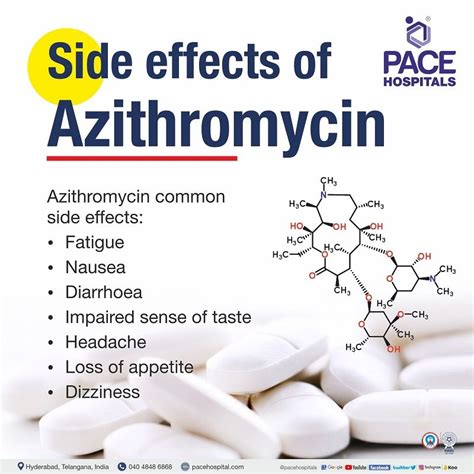Intro
Discover Azithromycin 500 dosage for adults, treating infections like pneumonia, bronchitis, and sinusitis with proper antibiotic guidelines, dosage instructions, and side effects management.
The importance of understanding the correct dosage of medications cannot be overstated, especially when it comes to antibiotics like azithromycin. Azithromycin is a widely used antibiotic that belongs to the macrolide class, effective against a broad spectrum of bacterial infections. It's crucial for adults to know the proper dosage to ensure the effectiveness of the treatment and minimize potential side effects. Azithromycin 500 mg is a common dosage form for adults, but the specific regimen can vary depending on the type of infection being treated.
Azithromycin's popularity stems from its convenience, with once-daily dosing for most infections, and its relatively mild side effect profile compared to other antibiotics. However, like all medications, it must be taken as directed by a healthcare provider. The dosage and duration of treatment with azithromycin can vary significantly based on the specific condition being treated, ranging from acute bacterial sinusitis to community-acquired pneumonia, and even certain sexually transmitted diseases.
The flexibility of azithromycin in treating various infections is one of its key benefits, but this also means that patients must be diligent in following the prescribed regimen. For many infections, a 500 mg dose of azithromycin is the standard, but this might be given as a single dose, or more commonly, as an initial dose followed by a series of lower doses. Understanding the correct dosage and potential interactions with other medications is essential for ensuring the treatment's success and safety.
Azithromycin 500 mg: Understanding the Dosage

The dosage of azithromycin for adults typically starts at 500 mg, which can be administered as a single dose or as part of a longer treatment course. For example, in the treatment of chlamydia, a single 1 gram (1000 mg) dose is often prescribed, while for other infections like community-acquired pneumonia, the regimen might involve an initial 500 mg dose on the first day, followed by 250 mg once daily for the next four days.
Common Infections Treated with Azithromycin 500 mg
Azithromycin is effective against a wide range of bacterial infections, including: - Acute bacterial sinusitis - Community-acquired pneumonia - Pharyngitis/tonsillitis - Skin and skin structure infections - Urethritis and cervicitisBenefits of Azithromycin 500 mg Dosage

One of the significant benefits of azithromycin is its high concentration in tissues, which allows for once-daily dosing and enhances patient compliance. The 500 mg dosage, in particular, offers a balance between efficacy and the risk of side effects, making it suitable for a broad range of patients. Additionally, azithromycin has been shown to have a long half-life, which means it stays in the body for an extended period, providing prolonged protection against bacterial infections.
Working Mechanism of Azithromycin
Azithromycin works by inhibiting protein synthesis in bacteria, thereby preventing the bacteria from producing the proteins necessary for their growth and reproduction. This action is bacteriostatic, meaning it inhibits the growth of bacteria, or bactericidal, meaning it kills bacteria, depending on the concentration of the drug and the type of bacteria.Side Effects and Precautions

While azithromycin is generally well-tolerated, it can cause side effects, including gastrointestinal disturbances like diarrhea, nausea, and abdominal pain. Other potential side effects include headache, dizziness, and fatigue. It's essential for patients to discuss any medications they are currently taking with their healthcare provider, as azithromycin can interact with certain drugs, including antacids, digoxin, and warfarin.
Steps for Taking Azithromycin 500 mg
To ensure the effectiveness of azithromycin and minimize side effects: - Take the medication exactly as prescribed by your healthcare provider. - Complete the full treatment course, even if symptoms improve before finishing the medication. - Inform your healthcare provider about any other medications or supplements you are taking. - Monitor for signs of allergic reactions or severe side effects.Practical Examples and Statistical Data

Studies have shown that azithromycin is effective in treating a wide range of bacterial infections, with cure rates often exceeding 90%. For example, in the treatment of community-acquired pneumonia, azithromycin has been shown to have a clinical success rate of approximately 95%. These statistics underscore the importance of adhering to the prescribed dosage regimen to achieve optimal treatment outcomes.
FAQs About Azithromycin 500 mg
Some frequently asked questions about azithromycin include: - What is the standard dosage of azithromycin for adults? - Can azithromycin be used to treat viral infections? - How long does it take for azithromycin to start working?What is the most common dosage of azithromycin for adults?
+The most common dosage of azithromycin for adults is 500 mg, which can be given as a single dose or as part of a multi-dose regimen.
Can I take azithromycin for a viral infection?
+No, azithromycin is an antibiotic and is only effective against bacterial infections. It should not be used to treat viral infections.
How quickly does azithromycin start working?
+Azithromycin starts working within a few hours of taking the first dose, but it may take a few days to notice significant improvement in symptoms.
Final Thoughts on Azithromycin 500 mg Dosage

In conclusion, understanding the correct dosage of azithromycin, such as the 500 mg dosage for adults, is crucial for the effective treatment of bacterial infections. By following the prescribed regimen, being aware of potential side effects, and understanding how azithromycin works, patients can ensure they are getting the most out of their treatment. If you have any questions about azithromycin or its use, don't hesitate to reach out to a healthcare professional.
We invite you to share your experiences or ask questions about azithromycin in the comments below. Your input can help others better understand this important medication. Additionally, if you found this article informative, please consider sharing it with others who might benefit from this information. Together, we can promote better health outcomes through education and awareness.
